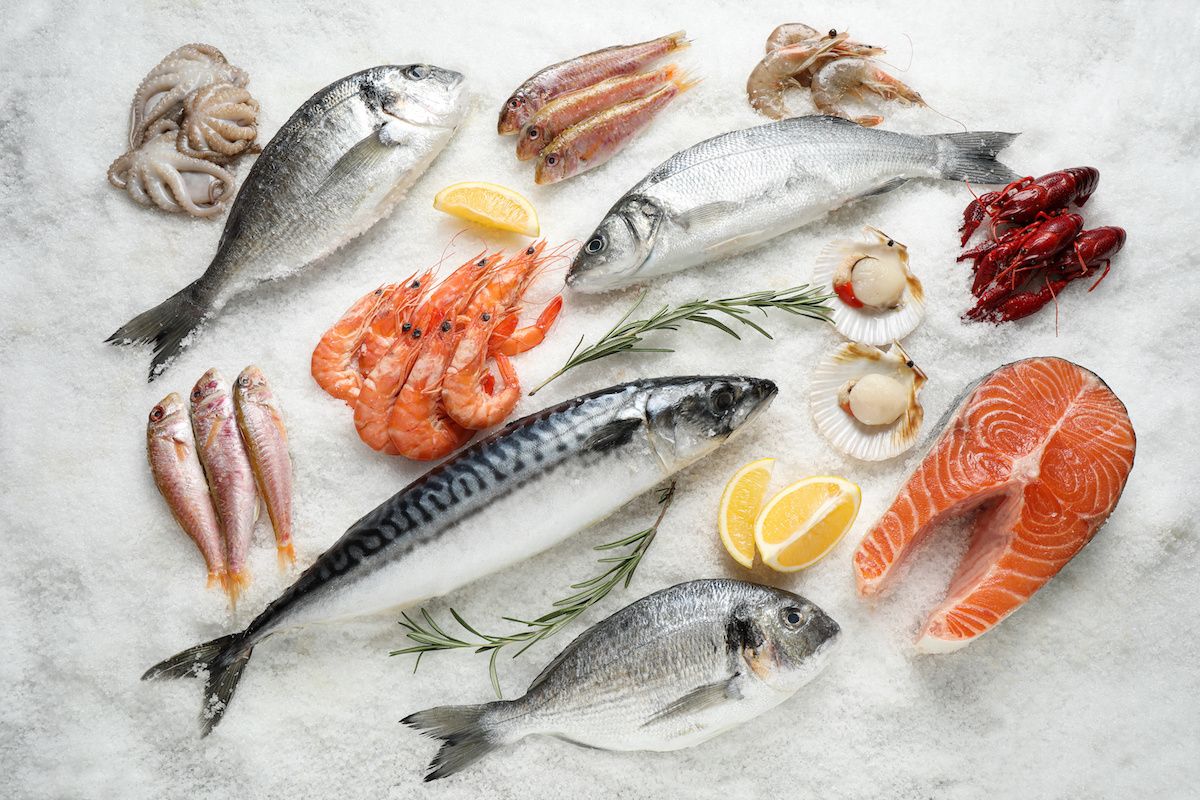Research continues to show that seafood — fish and shellfish — is part of a healthy diet, but you may have concerns about contaminants. Let’s dive into the nutrients that seafood provides and find out whether there’s any associated risk.
Seafood can help you improve your diet
Seafood is one part of an overall pattern of healthy eating — one that also includes lots of fruits and vegetables, whole grains, nuts, seeds and beans. This pattern also limits red and processed meats. For lower cancer risk, limit red meats (beef, pork, lamb) to 12-18 ounces per week (about three portions per week) and avoid processed meats, such as bacon, hot dogs and lunch meats.
Eating fish can be one way to cut back on red and processed meat consumption. Some population studies have also linked higher fish consumption with reduced risk of some cancers, including colon and breast — and seafood is good for the heart. Aim to include eight ounces of a variety of seafood in your meals each week to help reduce the risk of heart disease.
Netting a powerful catch of nutrients
Seafood provides a variety of nutrients, including:
- Protein. Seafood provides protein, the essential building block for enzymes, muscles and other tissues in the body.
- Vitamins and minerals:
- Fish contain levels of B vitamins that are similar to many other protein-rich foods. B vitamins (niacin, thiamin, riboflavin and B6) help the body release energy, aid in the function of the nervous system and the formation of blood cells, and help build tissues.
- Seafood provides minerals, including potassium and selenium.
- Fattier fish can be a good source of vitamins D and A, and some shellfish are a good source of iron, zinc, magnesium, copper, iodine and other trace minerals.
- Omega-3 fat. Seafood contains omega-3 fatty acids called DHA (docosahexaenoic acid) and EPA (eicosapentaenoic acid), which are beneficial for heart health. In addition, lab studies have suggested that these fats alter colon cell function and may cut down on inflammation. Fish with higher amounts of omega-3 fatty acids include salmon, mackerel, herring, lake and rainbow trout, sardines and albacore tuna.
Fish oil supplements are very popular, but for people who do not have heart disease and are looking to maintain heart health, the American Heart Association says it’s best to get your omega-3 fatty acids through foods. Furthermore, the American Institute for Cancer Research says you shouldn’t rely on supplements for cancer protection.
Healthy Eating
Your cancer risk depends on many different factors, and your diet and lifestyle choices play a significant role. Learn how healthier eating can help lower your risk of developing cancer.
Learn MoreRecommendations regarding mercury in fish
Pesticides and other pollutants accumulate in water and are present in most fish and shellfish at some level. However, both the U.S. Food and Drug Administration (FDA) and the U.S. Environmental Protection Agency (EPA) state that for most people who eat a variety of fish — farmed or wild-caught — the levels of contaminants are too small to cause harm.
One specific contaminant of concern is mercury, a heavy metal found in seafood in varying levels. For the general population, the health benefits from consuming seafood outweigh the health risks associated with mercury. However, mercury can harm the nervous systems of babies and young children if consumed in high amounts. That’s why certain at-risk populations — including children, breastfeeding women and women who are or who could become pregnant — should steer away from certain types of fish that are higher in mercury. Large fish that live the longest and consume other smaller fish, such as sharks and swordfish, accumulate the highest amounts of mercury.
Seafood varieties that are higher in omega-3 fatty acids and lower in mercury include salmon, anchovies, herring, sardines, Pacific oysters, trout, and Atlantic and Pacific mackerel (not king mackerel, which is high in mercury). For more specific recommendations and additional resources, see the EPA’s advice on Choosing Fish Wisely.
Tips for Eating More Seafood:
- Make it flavorful! Try grilling, roasting, broiling or baking. Add spices, herbs and citrus and try to avoid deep-frying, breading and cream sauces. Check out flavoring tips and information on cooking techniques.
- Get a variety, from filets of fresh fish or clams and mussels to shrimp stir-fry!
- Head to the canned and frozen aisle. These options are often more economical and convenient to have on hand, and they’re just as nutritious! Try a salad Niçoise made with canned tuna or a shrimp salad made with frozen shrimp.
- Practice food safety. Cook fish to an internal temp of 145 degrees F. Shrimp, lobster and scallops should be cooked until they are opaque (milky white). Before cooking shellfish, be sure that they clamp shut when you tap on them and open when they are cooked; discard any that don’t.
- Switch it up. Try adding seafood to pasta, patties, stir fries, fish tacos and sandwiches.
- For information on sustainability, visit the Monterey Bay Aquarium’s Seafood Watch.
- Additional recipes to try:

